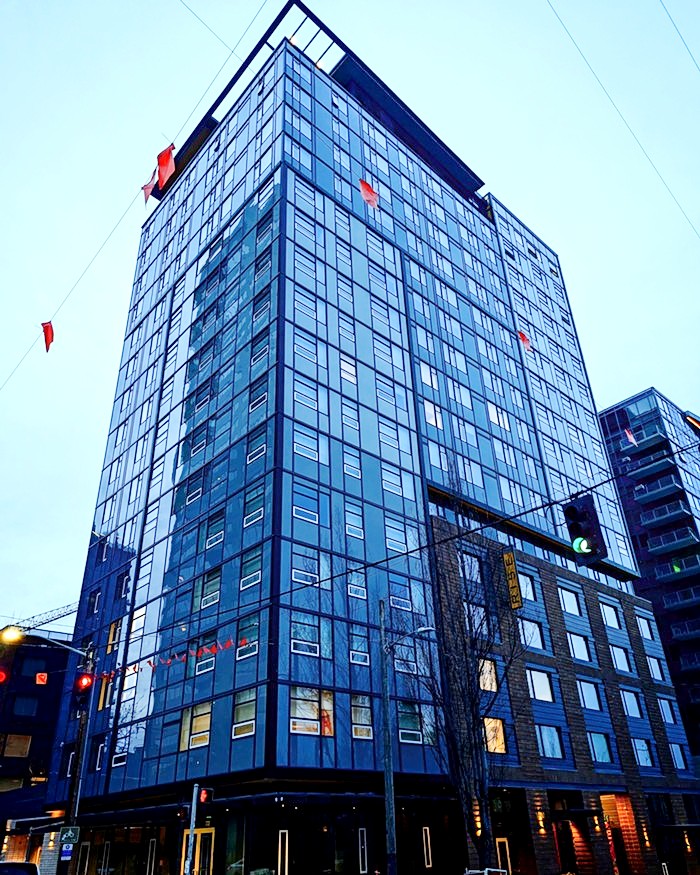Everybody kept asking Mark Fuller about the fried chicken. He started serving it at his West Seattle restaurant Spring Hill as a sort of in-house pop-up—a way to fill seats on quiet Monday nights. The fried chicken, though, was so good that its acclaim became clamorous. The fried chicken got praised in Travel + Leisure; Monday nights were booked six weeks in advance. When would Spring Hill start serving the fried chicken every night? The demands multiplied. The fried chicken would not be stopped.
It would've been weird to just stick the fried chicken on Spring Hill's deeply considered upscale menu. It'd be alongside items like "cold cioppino"—a miraculously crystal-clear tomato broth with a few drops of basil oil and morsels of impeccable seafood (and that was just a soup). A menu reformatting last year, with more small plates and just a few entrées, indicates that financial exigencies were at work here, too—West Seattle probably couldn't quite support one of Seattle's best fine-dining restaurants In This Economy. It is right to pause to mourn the recent passing of Spring Hill—the food was fascinating and delicious and often incredible, in the sense of difficult to entirely believe.
But now there is the fried chicken—and the manapua, the poke, the saimin. Spring Hill is now called Ma'ono Fried Chicken & Whisky. In Hawaiian, "ono" means "delicious," and "ma" is a prefix that means going toward, facing, or making. Fuller's mother is from Kauai, and he spent time there growing up; he decided to make Hawaiian-inspired food to go along with the fried chicken on his new menu. (Whiskey requires no explanation.)
First: Yes, the fried chicken is really, really good. If it's not the best fried chicken you've ever had, you're a very lucky individual. It's burnished brown, with a thick, crunchy crust and lush, flavorful flesh. Fuller probably takes four or five extra steps to make it so. What you really need to know is that you still have to reserve a bird ahead of time—they only serve 30 per night. Also, at $38 per whole chicken, the fried chicken is not cheap. Nor should it be—if humans were meant to eat a lot of fried chicken, it'd grow on trees instead of requiring a vat of terrifying and difficult-to-dispose-of boiling oil. Also, cheap chicken is not naturally and humanely raised in Mount Vernon as this is, nor does it come with kimchi (not blastingly spicy), rice, and dipping sauces, including a sinus-clearing sesame-mustard and a vaguely Tso's-esque Korean. (Our kimchi and rice did not come with serving utensils; the service was a little lackadaisical on a recent Sunday night. We dug in with forks and didn't mind.)
You must also think critically about what Ma'ono's menu says—"One Whole Chicken For Two." One whole chicken for two people. Have you ever eaten an entire half a chicken? Especially fried? We ended up with five pieces of chicken per person—not small pieces, not lightly breaded. It was the unthinkable: too much fried chicken.
What you need to do is bring approximately three friends, pre-order one chicken, and then eat bountifully of everything else. I went back with one friend—an opinionated lady, herself from Kauai—and we ate as much as we possibly could (no chicken), and both of us loved pretty much everything.
The manapua ($4)—"Hawaiian hum bao," according to the Kauaian—were two sizable steamed buns filled with rich, dark, sweet-and-sour barbecued pork, with a spicy shoyu-harissa sauce on the side. These are warm and squishy and maybe one of the best things at Ma'ono, and I would like to lie down on a bed of them. They were enthusiastically approved by the Kauaian, as was the saimin ($14): a Hawaiian version of ramen, with slightly firmer noodles (here, perfectly cooked), pieces of pork belly, a prettily oozing halved soft-boiled egg, less-fishy-than-usual fish cake, mustard greens, and pieces of crisp nori, all in a pork-and-ham broth with an edge of tartness. Originally on Spring Hill's weekend brunch menu, the saimin would be great for a hangover; it's also enough for four people, if you hope to eat anything else. My Kauaian laughed at the fanciness of the pork and egg—apparently in Hawaiian saimin dives, the egg's hard-boiled and the pork definitely isn't belly—then ate it up.
The poke—chilled cubes of raw albacore with cabbage, red ogo seaweed, sesame, macadamia nuts, and chilies ($12)—was impeccably fresh and disappeared rapidly, though a nitpicker might've wanted more chili spice. (Extra-nitpickily, vis-à-vis the presentation: The poke rests in a bowl in the middle of a field of ice, and it gets a little too cold.) The Ma'ono dog, a house-made Portuguese sausage with banh-mi-type pickled vegetables ($8), is a superior, extra-rich version of a fancied-up hot dog, with chicken liver pâté smeared on the bun. You should only eat half of one, but you should definitely have it.
The brown butter mochi cake ($7), made with sweet rice flour and served with fresh pineapple and a little tapioca pudding, was ordered at the behest of the Kauaian and declared great. "We used to make this after school," she said wistfully. "It was our cookie dough."
We didn't get to the whiskey—40-plus kinds—except in the form of an excellent Knox Manhattan (made with Fernet, $12). We didn't get to the musubi with house-made Spam ($4), or the macaroni salad ($4), or a whole rainbow trout seasoned with Kauai sea salt gathered by Fuller's family ($19)—which all seems urgently worth going back for. While Spring Hill is missed, the good news is that Ma'ono's food is just as impeccably sourced, and maybe even more unlike anything else in town. ![]()



















